Reach to Lukla by Flight for start the Trek
Lukla is a small town and the starting point for all treks to the Everest region, including the Everest Three High Passes Trek. It serves as a gateway with a small airstrip to Everest region trekking, and there is no road access from Kathmandu to Lukla. Trekkers must either fly from Kathmandu or Ramechhap or trek from Phaplu or Jiri. Regular flights to Lukla are operated by Tara Air, Summit Air, and Sita Air from Kathmandu or Ramechhap during the main trekking season.
During peak trekking months—March, April, May, September, October, and November—flights to Lukla may operate from Ramechhap/Manthali due to Nepal's aviation rules aimed at avoiding congestion and air traffic delays. Ramechhap Airport is approximately 144 kilometers east of Kathmandu and requires a 3 to 5-hour drive by private vehicles from Kathmandu.
Regarding luggage, there is a weight limit of 15 kg per passenger, including your hand-carry bag. It is advisable to keep your luggage under this limit to avoid extra charges. In case of an overload, your bag may be transported on a subsequent flight, so you may need to wait for a few hours at Lukla to receive the luggage.
Be prepared for potential delays or cancellations, as weather conditions can impact flights to and from Lukla. If flights are delayed or canceled, you may need to add a few extra days to your itinerary. We will do our best to adjust the itinerary as needed. If you do not have extra time before or after your trekking itinerary, you might consider taking a helicopter close to Lukla or shifting your trekking route to another region. Arranging for one or two additional days in your trip is highly recommended to accommodate potential flight delays or cancellations and to ensure you can board your pre-planned international flight.
Best Time to Everest 3 High Passes Trek
The best time for Everest Three High Passes Trek is during the pre-monsoon (spring) and post-monsoon (autumn) seasons in Nepal. These periods offer the most favorable weather conditions for trekking in Nepal Himalayas.
Both seasons offer good weather conditions, but April, May, October, and November are considered the best months for the Everest Three High Passes trek. These months provide suitable conditions for trekking without significant hazards. However, keep in mind that the weather in the mountains can be changeable, so it's always advisable to be prepared for sudden changes regardless of the season.
Choosing the best time depends on your preferences, availability, and tolerance for crowds, as both spring and autumn have their unique advantages.
Spring is the best and most favorable season for trekking to Everest Three High Passes Trek. The weather is generally stable, with clear skies, mild temperatures, warm days, and less rain and snow. The visibility is excellent for mountain views, and the trails are often busy with trekkers. However, snow can remain at higher altitudes, especially around three passes, at the beginning of March. During this period, you need to be prepared with proper cold-weather gear and an experienced guide.
- Autumn (September to November):
Autumn is considered the peak trekking season, making it one of the best times for the Everest Three High Passes Trek. Autumn offers clear skies, stable weather, and excellent visibility. The temperatures are pleasant during the day, perfect for trekking. The trails might be busier compared to other times, but the views of the Himalayas are breathtaking. However, by the end of November, snow can accumulate around the three passes, so you need to be prepared with proper cold-weather gear and an experienced guide.
- Winter (Dec to Feb) & summer (June to August):
These seasons are generally not recommended for Three High Passes trek due to extreme cold, snowfall, and potential avalanche risks around the three high passes in winter, while the monsoon brings heavy rainfall, clouds, and blocked trails and mountain views.
Weather and temperature conditions along the Trek
The weather conditions along the Everest Three High Passes Trek will be different significantly depending on the season and the altitude. Here's a general overview of weather condition and temperature.
Spring is one of the best times to trek in the Everest region. The weather is generally stable, with clear skies and mild temperatures. Daytime temperatures at lower altitudes can range from 10°C to 20°C (50°F to 68°F), but temperatures drop in the higher altitude as you ascend.
- Summer/Monsoon (June to August):
The summer months bring the monsoon season to Nepal, bringing heavy rain and cloudy skies. Trekking during this time can be challenging due to slippery trails, leeches, and poor visibility. It's not the best time for the Everest Three High Passes Trek.
- Autumn (September to November):
Autumn is another popular trekking season in Nepal. The weather will be stable, with clear skies and mild temperatures. Daytime temperatures at lower altitudes are similar to spring, but it can be colder at higher altitudes.
- Winter (December to February):
Winter brings cold temperatures and snowfall to the Everest region so difficult to cross the high passes. Daytime temperatures at lower altitudes can range from 0°C to 10°C (32°F to 50°F), but it will be much colder at higher altitudes. Trekking during this time requires proper cold-weather gear and preparation with experienced trekking guide.
As you ascend to higher altitudes, temperatures decrease significantly. It's necessary to be prepared for cold weather, even during the main trekking season. Weather conditions will be changing rapidly in the mountains, so it's important to be flexible with your itinerary and be prepared for all conditions.
Anyway, the best times to trek the Everest Three High Passes are in the spring (March to May) and autumn (September to November) when the weather is most stable. However, it's necessary to be prepared for a any range of conditions and to check the weather forecast regularly during your trek with your guide.
Everest Three High Passes Trek Difficulty
The difficulty level of the Three High Passes Trek 13 days Trek from Kathmandu to Kathmandu is considered challenging and rewarding adventure due to its durations of the trek, remote location, variety of terrain, including steep ascents and descents, rocky paths, and possibly some snow-covered sections, especially around the higher area on the three high passes. Weather conditions in the three high passes trekking route are always changeable, with cold temperatures and the possibility of snowfall, especially at higher altitudes. So this makes the trek physically challenging.
There is no road access to Lukla, making it difficult to reach, as it is the starting and ending point of the trek. Lukla is situated at an altitude of 2,800 meters above sea level. The trek crosses the three high passes. The trail is well-maintained, but around the high passes, it becomes rocky and icy, featuring a mix of uphill and downhill terrain at progressively increasing altitudes. Daily walking distances range from 5 to 8 hours in high-altitude terrains, which present another challenge. Good fitness is required, but maintaining good health, physical fitness, and mental preparedness is highly recommended for ascending to high altitudes.
The trek to Everest Three High Passes for 14 days in the mountains is definitely not simple due to its walk on high altitude terrains. Some sections of the trail are relatively challenging, with steep slopes and icy on rocky terrain. Some parts of the trail can be prone to landslides and avalanches. Snowfall and rainfall can make the trek more challenging, so it is important to prepare with proper seasonal equipment.
Having an experienced guide and porter, proper rain and cold weather gear, staying in teahouses, taking rest days for acclimatization, walking slowly, and taking short, easy steps will help minimize the difficulty and make the Everest Three High Passes Trek more enjoyable and hassle-free.
Acclimatization day to reduce the Altitude Sickness for the Trip
An acclimatization day is necessary to reduce the risk of high-altitude sickness during the 14-day Everest Three High Passes Trek. This trek takes place in a remote, high-altitude area of the Everest Region, starting at 2,800 meters and reaching Kala Patthar at 5,545 meters after crossing the high passes. Along the way, trekkers pass through beautiful Sherpa villages, forests, and other high-altitude landscapes with rocky and icy path. As you ascend, oxygen levels and air pressure decrease compared to sea level. Once you reach an altitude above 3,500 meters, you may experience symptoms of altitude sickness, such as nausea, vomiting, diarrhea, headaches, loss of appetite, tiredness, dizziness, and sleeplessness.
Namche Bazaar and Gokyo are designated as our acclimatization rest days in the itinerary for this reduce the altitude sickness on this Trip. These rest day help prevent altitude sickness and allow you to adapt to the environment. If you experience any symptoms of altitude sickness during this journey, it is important to address them immediately to avoid difficulties in completing the trip. To prevent these issues, you should follow your guide's instructions, as they are knowledgeable about high-altitude sickness as well as follow the itinerary closely, as proper acclimatization helps your body adapt to higher elevations. Additionally, stay hydrated by drinking plenty of water, eat a well-balanced diet with sufficient carbohydrates, maintain a comfortable pace, and avoid alcohol and sedatives.
When ascending on the 3,500 meters, be honest with your guide about how you are feeling. Your guide will advise you to walk slowly and may suggest that you sleep at a lower altitude before ascending further. This practice, known as acclimatization, helps reduce the risk of altitude sickness. However, if you continue to feel unwell despite following these recommendations, you should return to a lower altitude.
Food and Accommodations along the Everest 3 Passes Trek
During the Everest Three Passes Trek, you'll stay in teahouses, which are basic lodges offering accommodation and meals. Due to the popularity of the Everest Three High Passes Trek, the accommodations in the area are well managed with the availability of lots of accommodations and restaurants along the trekking trail. Therefore there will be less or no difficulty in finding the best accommodations in the region.
- Accommodation: Teahouses along the Everest Three Passes Trek are normally simple and provide basic facilities. Rooms are usually twin or dormitory style with shared bathrooms. While some places along the trek offer luxury accommodations, these are limited, and availability may vary. The qualities of lodges are varying from place to place, so you can choose accommodations that best suit your budget and preferences along the route.
- Food: Teahouses along the Everest Three Passes Trek offer a variety of meals, including traditional Nepali dishes like dal bhat, as well as international options like pasta and noodles. Each lodge has a menu with similar food items, but you are free to choose from the menu. The food is simple yet hearty, designed to provide energy for trekking. The cooks are skilled, but the taste of the meals may differ from that of Western cuisine.
As you ascend, the variety of food available may decrease, and prices may increase due to the difficulty of transportation. Meat options are limited and may not always be fresh in the mountains, so we advise you to try vegetarian recipes during your trek.
- Drinking Water: It's necessary to stay hydrated at higher elevations, so you'll need to drink plenty of water. Bottled water and boiled water are available along the trail, but they can be expensive. Many trekkers use water purification tablets or a water filter to treat water from taps or streams. Therefore, bringing a reusable water bottle for drinking water is highly recommended for the Everest Three High Passes Trek.
- Hot Shower & Toilets: Hot showers are available at all teahouses along the Everest Three High Passes Trek for an extra charge. These showers are heated using gas geysers. However, the cost of a hot shower will be high, ranging from 400 to 600 NPR per shower, especially at higher altitudes where heating water is more challenging due to the cold temperatures.
Toilet facilities in the teahouses along the Everest Three High Passes Trek range from Western-style toilets to squat toilets, and they are commonly shared among trekkers. As you ascend to higher altitudes, the facilities may become more basic due to the cold temperatures.
Requires Permits & Permits Cost for the Trek
The Everest Three High Passes trekking route is situated within the Sagarmatha National Park in the Khumbu Pasang Lhamu Rural Municipality in the Everest region of Nepal. Therefore, you need to purchase a Sagarmatha National Park entrance permit and a Khumbu Pasang Lhamu Rural Municipality entrance permit. Another required permit is the TIMS (Trekkers Information Management System) card, which is for your safety and security, as it helps keep track of trekkers' whereabouts in the region. All permits are mandatory for the Everest Three High Passes Trek.
These permits can be obtained through a reputable trekking company from the Tourism Board in Bhrikuti Mandap, Kathmandu. The Sagarmatha National Park entrance permit can be buy in Monjo and Khumbu Pasang Lhamu Rural Municipality entrance permit can be purchased in Lukla after starting the journey. You or your guide must carry these permits throughout the trek, as you will need to show them and register at every checkpoint along the trail. If you attempt to trek without these permits, you will need to purchase them on-site at double the cost (as a penalty) or you may be forced to turn back. Requiring permits are given below:-
Khumbu Pasang Lhamu Rural Municipality entrance permits
- Cost: US$ 30 per person, per trek for all foreigners
- Cost: US$ 20 per person for SAARC (South Asian Association for Regional Cooperation) citizens
TIMS (Trekkers Information Management System) Card:
- Cost: US$ 20 per person, per trek
Sagarmatha National Park Entrance Fees:
- Cost: US$ 30 per person, per trek for all foreigners
- Cost: US$ 15 per person for SAARC (South Asian Association for Regional Cooperation) citizens
Luggage Load Carried by Porters during the Trek
If you are doing Three High Passes Trek with just a guide, it will be a cheaper journey, but the guide will not carry your luggage because they are professionals and have their own luggage to carry. In this case, you can hire a porter-cum-guide who handles both guiding and carrying your luggage, typically about 10 to 12 kg.
If you are in a group, we usually assign one porter for every two trekkers, so each trekker's luggage should weigh around 10 kg. If you hire a Porter, a porter typically carries 20 to 25 kg during the trek in Nepal. Trekking with both a guide and a porter highly recommended because they makes walking easier and gives you more free time to enjoy the trekking and climbing, resulting in a memorable trekking experience in Nepal during the Everest Three High Passes Trek.
Electricity and Charging Facilities
Most teahouses along the Everest Three High Passes trail have electricity, but there will be limited availability beyond Lukla, Phakding and Namche. Electricity in the lower regions is often generated by mini electronic hydro power, while solar power is more common in teahouses at higher areas. Charging electronic devices like phones and cameras usually incurs an extra cost. However, during the busy trekking season, charging facilities will be in high demand, so it is highly recommended to bring a power bank to charge your electronic devices.
Communication (mobile and Wi-Fi Network) along the trek
Communication (mobile and Wi-Fi Network) along the Everest Three High Passes Trek will be challenging due to its remote and high-altitude location.
- Mobile Network: In lower elevations and some parts of the trek, you may find irregular mobile network coverage from Ncell or Nepal Telecom. However, the signal will be weak and unreliable, especially in the more remote areas and at higher altitudes. If you plan to use your mobile phone, it's advisable to purchase a local SIM card from Ncell or Nepal Telecom in Kathmandu. This can provide better coverage in some areas along the trek but not reliable for mobile data.
- Wi-Fi Network: Most teahouses along the trek offer Wi-Fi for an additional cost, typically through a prepaid card system. However, the connection can be slow and may not always be available due to weather conditions or technical issues. Therefore, we highly recommend not relying on regular Wi-Fi to connect with your family and friends. If you have an emergency and need to contact your family, our guide will assist you in managing the connection with your family.
Tipping information
The trekking and climbing guide, as well as the porter, is essential to the success of the trip, ensuring that it is completed smoothly and without issues. Tipping is an important aspect of trekking in Nepal, as it acknowledges and appreciates the hard work of the local staff who assist you throughout your journey. It is customary to tip at the end of the trek, and you should gather all team members (guide, porter, assistant guide) together to distribute the tip. Tips are generally given in cash, preferably in US dollars or Nepalese rupees, and it is best to use small denominations to facilitate easier distribution
While the typical guideline is to tip around 10% of the total payable amount, you can adjust this based on the quality of service provided. Recommended tipping amounts are as follows:
- Guide: $12-$15 per day
- Climbing Guide: US$ 80 total
- Porter: $8-$10 per day
- Assistant Guide: $8-$12 per day
These tips are highly recommended to motivate the team and reward them for their outstanding service, contributing to a memorable and inspiring experience.
Equipment & gear list for 3 High Passes Trek
Before departing from your home, it is necessary to pack your trip necessities. While it might be weighty to transport everything from your country to Nepal, some necessary equipment can be rented or purchased in Kathmandu's Thamel area.
For Everest Three High Passes trekking in Nepal, basic but warm gear suitable for all seasons is necessary, although specific items may vary depending on the season and the length of the trekking days you choose.
It is highly recommended to choose lightweight and multi-functional gear and to minimize unnecessary items. This approach will help reduce the weight of your pack and make your trekking experience more comfortable.
Documents:
- Passport and 4 passport size photos
- Travel insurance details (in case an emergency evacuation if needed)
- Boarding passes for flights
- Driver’s license (if needed)
- Cash USD (minimum $500)
- Credit/Debit Card (Ensure you have $500 on your card incase an emergency helicopter evacuation is needed)
Sleeping:
- Sleeping bag (Comfort rating -20 Celsius recommended)
- Sleeping bag liner (Optional) - not necessary
Footwear:
- Trekking boots: one pair lightweight
- Sandals for city and tea house footwear
- Shoes for the plane and tea houses (Optional) - not necessary
- Gaiters for hiking in winter to the base camp
- Thin, lightweight inner socks
- Thick, warm wool hiking socks
Clothing for Body:
- Please make sure that you have non-cotton clothing for trekking:
- Base-layer t-shirts (e.g. running t-shirts)
- Fleece/Windproof jacket
- Waterproof jacket
- Down jacket for warmth
- Base-layer trousers (optional)
- Waterproof trousers
- Trekking trousers
- Trekking shorts (Optional)
- Gloves, wool hat and sun hat
- Bandanna or scarf
Health Requirements (Basic First Aid Kit)
- First-aid kit; should contain lip salve, Aspirin, Band Aids, anti-histamine, Imodium or similar tablets for mild cases of diarrhea
- Re-hydration powder, extra prescription drugs you may be taking if any particular
- Wet wipes for cleaning can be purchased in Kathmandu
- Sanitizer, shampoo, Towel, wet wipes and washing soap
Others:
- Sunglasses and Sun cream
- Book (reading and writing materials) - not necessary
- MP-3 /Music, headphones and ear plug (who know some people on group are snoring) as optional.
- A day bag: 35 liters
- A duffel or rucksack with straps to go over your back (Max 12 kg of weight for porters to carry) - normally provide by trekking agency
- Dry Liner or Dry Bag- optional
- Water bottle/thermos/ camel bag: At least 2 L. Nalgen bottles best.
- Mobile and camera charger
- Power Bank
General Toiletries:
- Toilet papers/ tissue – you can buy in Nepal
- Contact lenses, Glasses (if needed)
- 1 medium sized quick drying towel
- Tooth brush/paste (preferably biodegradable)
- Nail clippers
- Face and body moisturizer
- Feminine hygiene products
- Small mirror - optional
- On Personal Hygiene
- Anti-bacterial hands wash
Others (optional):
- Trekking Poles
- Large plastic bags – for keeping items dry inside your kit / duffel bag
- Travel game i.e. chess, backgammon, and scrabble. (For luxuries)
- Binoculars (for luxuries)
- Trail Map/Guide book (if you are alone)


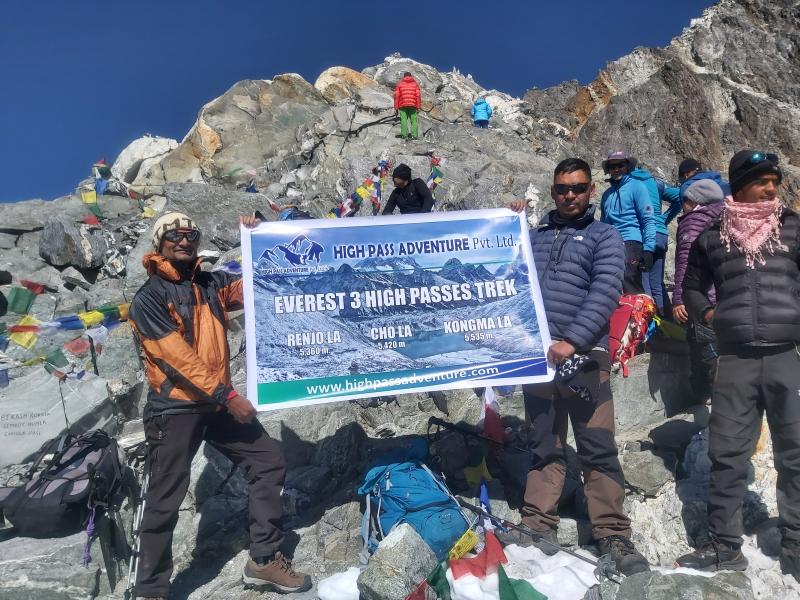




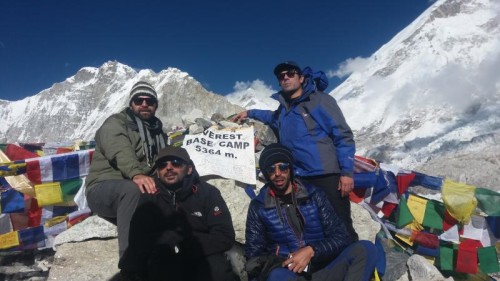
 USD 1340
USD 1340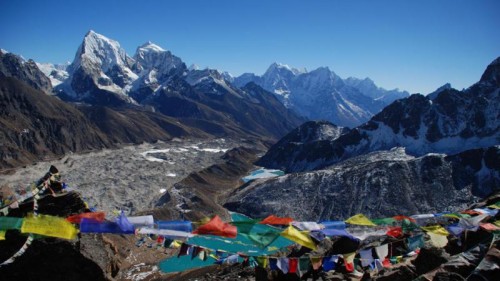

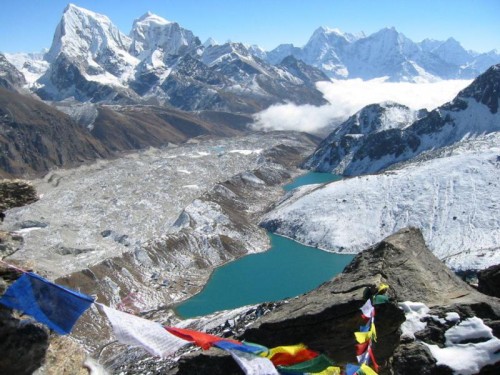
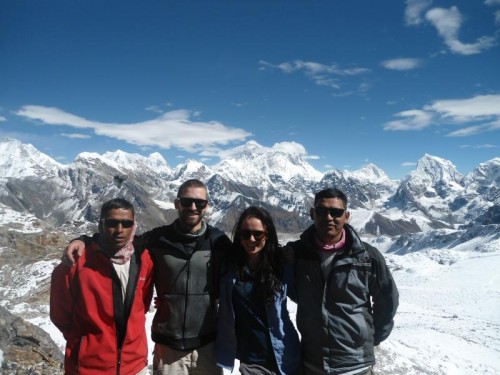

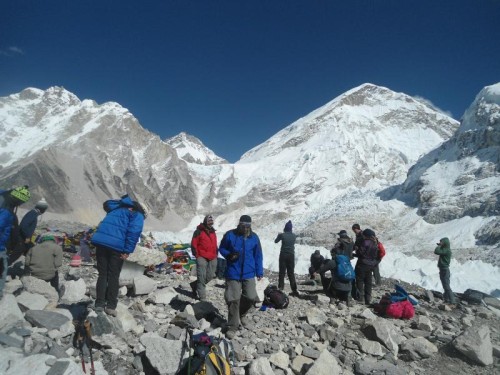
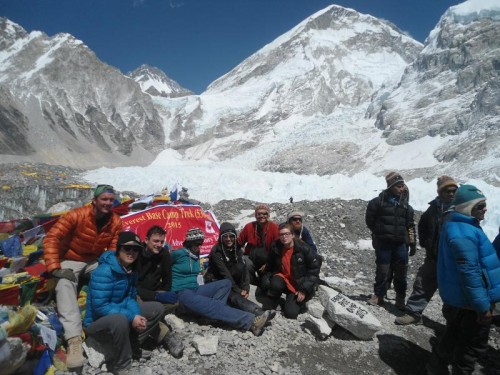

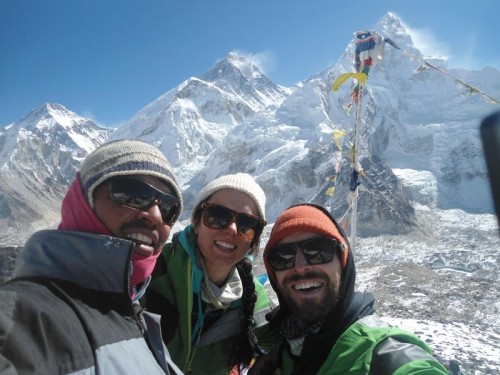
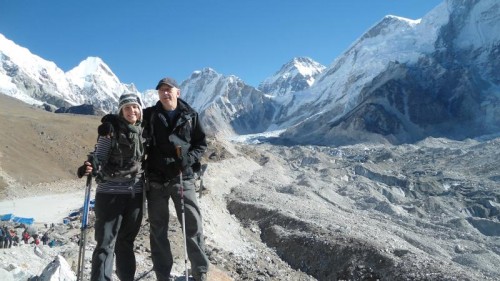
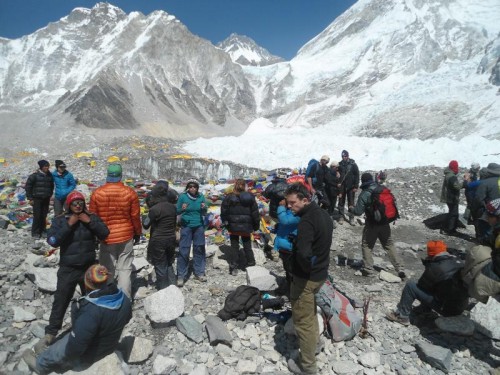
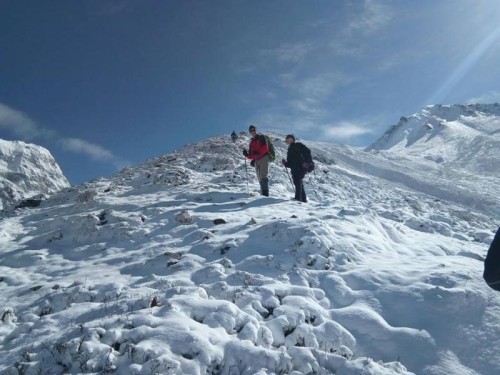

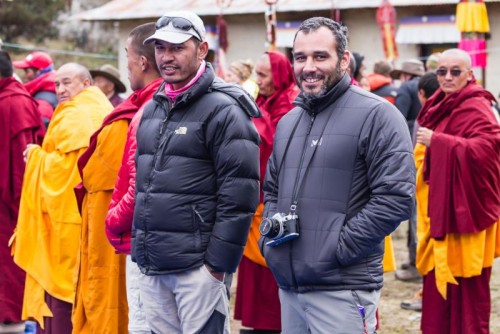
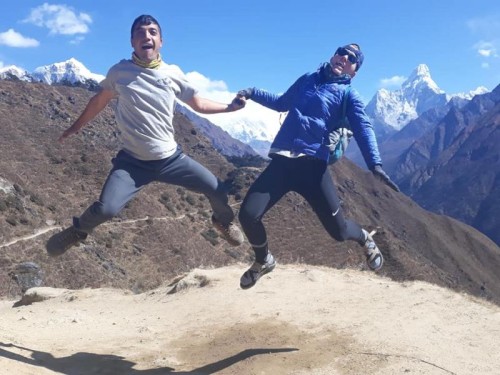

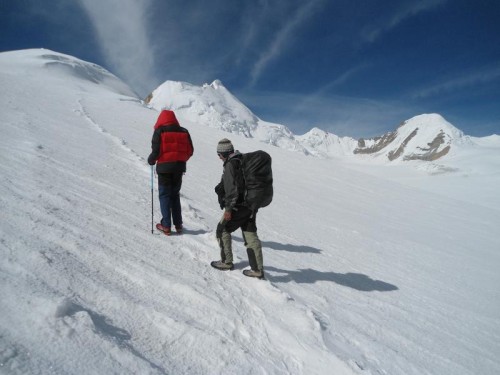
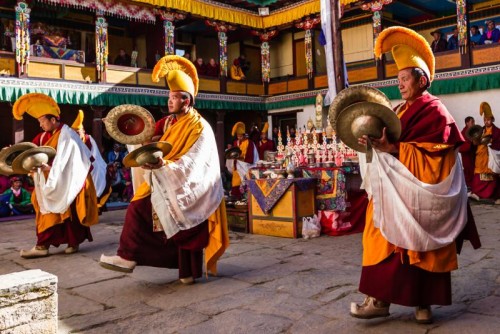
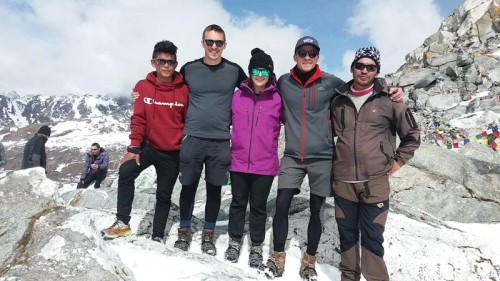

Billy son
Brazil
Best Trip in Life Time!!!
16th July, 2023
The operator of High Pass Adventure trekking company was extremely well managed on our trip from start to finish. We hiked from Lukla to Renjo-La pass, Gokyo, Cho-La pass, EBC, and Kalapathar. Prakash was our guide and provided an outstanding trekking experience, which skillfully balanced the desire to lend trekkers some freedom to make it their own adventure while still providing the proper structure, guidance, and insight into the Nepalese culture, landscape and snow capped mountain. This took the trip to another level. I cannot recommend High Pass Adventure enough. Outstanding!!!
David
Australia
Best Guide in Nepal
16th July, 2023
Me and my 2 friends arrived in Kathmandu without contacting any trekking company and guide for trekking. We met with a few companies in Thamel but they did not give us good information. Then we contacted Purna on the recommendations of a friend and knew right away he was the one for us. He quickly managed the Lukla flights for us the next day because that was impossible. He is a kind and funny man with lots of knowledge of all the mountains, places and people in the regions. The trip was amazing and very flexible, we decided to change our route and this was never an issue.
I can not recommend this High Pass Adventure company enough and When I go back to Nepal I will always use this company. 10/10